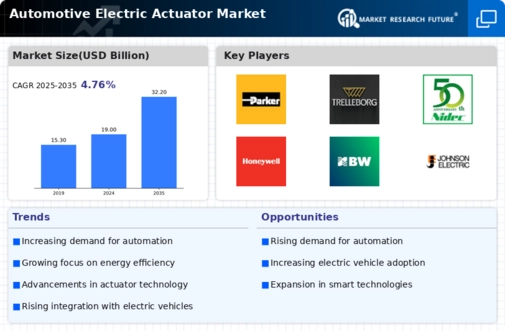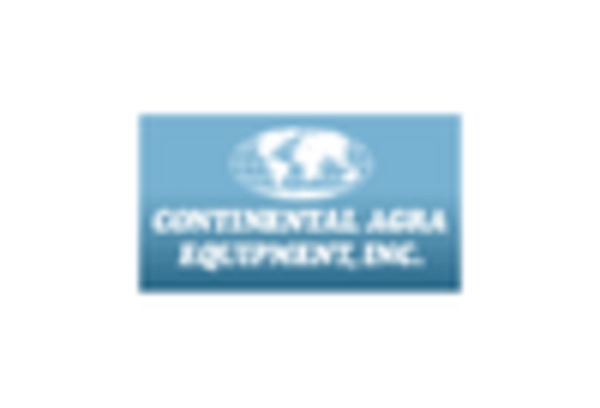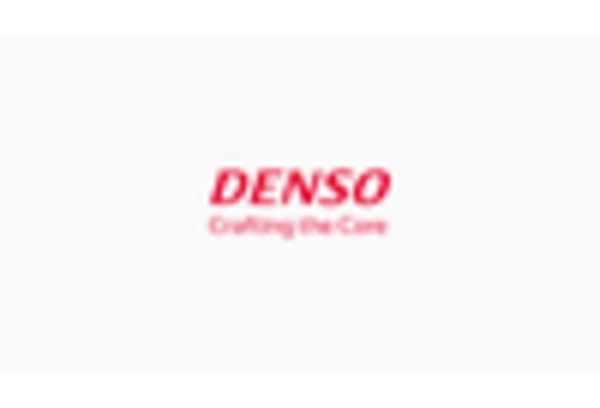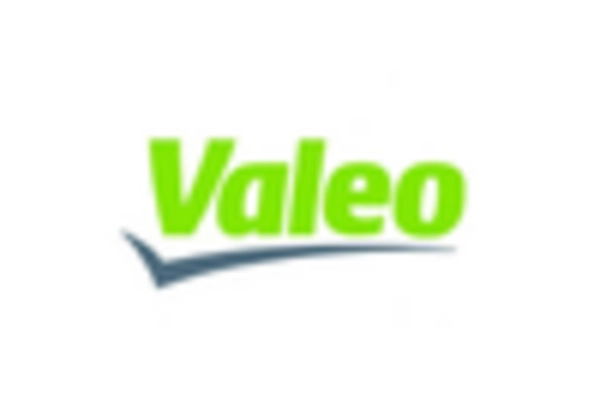Increase in Electric Vehicle Adoption
The rise in electric vehicle adoption is a primary driver for the Automotive Electric Actuator Market. As consumers increasingly opt for electric vehicles, the demand for electric actuators, which play a crucial role in various vehicle functions, is expected to surge. According to recent data, the electric vehicle market is projected to grow at a compound annual growth rate of over 20 percent in the coming years. This growth is likely to stimulate the Automotive Electric Actuator Market, as these components are essential for enhancing vehicle performance and efficiency. Furthermore, the shift towards sustainable transportation solutions is prompting manufacturers to invest in advanced electric actuator technologies, thereby expanding the market's potential. The integration of electric actuators in electric vehicles not only improves functionality but also contributes to energy efficiency, making them indispensable in modern automotive design.
Expansion of Automotive Electrification
The expansion of automotive electrification is a crucial driver for the Automotive Electric Actuator Market. As the automotive industry transitions towards electrification, the need for electric actuators is becoming increasingly pronounced. Electric actuators are vital for various applications, including power steering, braking systems, and throttle control, which are essential for electric and hybrid vehicles. The market is projected to grow as automakers invest in electrification strategies to meet consumer demand for more efficient and environmentally friendly vehicles. This shift is likely to create new opportunities for actuator manufacturers, as they develop innovative solutions that cater to the evolving needs of the automotive sector. The Automotive Electric Actuator Market is expected to benefit from this trend, as the integration of electric actuators becomes a standard practice in the design and manufacturing of modern vehicles.
Regulatory Push for Emission Reductions
The regulatory push for emission reductions is a significant driver for the Automotive Electric Actuator Market. Governments worldwide are implementing stringent emission standards to combat climate change and promote cleaner transportation solutions. This regulatory environment is encouraging automakers to adopt electric actuators, which contribute to improved vehicle efficiency and reduced emissions. As a result, the demand for electric actuators is expected to rise, as they are integral to the operation of electric and hybrid vehicles. The Automotive Electric Actuator Market is likely to see increased investments as manufacturers seek to comply with these regulations while enhancing vehicle performance. Furthermore, the transition towards more sustainable automotive technologies is expected to create new opportunities for actuator manufacturers, as they develop solutions that align with regulatory requirements and consumer expectations for environmentally friendly vehicles.
Technological Innovations in Actuator Design
Technological advancements in actuator design are significantly influencing the Automotive Electric Actuator Market. Innovations such as miniaturization, improved materials, and enhanced control systems are leading to the development of more efficient and reliable electric actuators. These advancements allow for better performance in various applications, including steering, braking, and throttle control. The market is witnessing a shift towards smart actuators that can communicate with other vehicle systems, enhancing overall vehicle functionality. As manufacturers strive to meet the increasing demands for automation and connectivity in vehicles, the Automotive Electric Actuator Market is likely to benefit from these technological innovations. The introduction of advanced sensors and control algorithms is expected to further optimize actuator performance, thereby driving market growth. This trend indicates a promising future for the industry as it adapts to the evolving landscape of automotive technology.
Growing Consumer Demand for Advanced Features
Growing consumer demand for advanced features in vehicles is driving the Automotive Electric Actuator Market. As consumers increasingly seek enhanced safety, comfort, and convenience features, automakers are compelled to integrate advanced technologies into their vehicles. Electric actuators are essential components in systems such as adaptive cruise control, automated parking, and advanced driver-assistance systems. The market is witnessing a trend where consumers prioritize vehicles equipped with these features, leading to a surge in demand for electric actuators. According to market analysis, the automotive sector is expected to invest heavily in technology that enhances user experience, which will likely benefit the Automotive Electric Actuator Market. This trend indicates a shift towards more sophisticated vehicle designs, where electric actuators play a pivotal role in delivering the desired functionalities that modern consumers expect.


















Leave a Comment